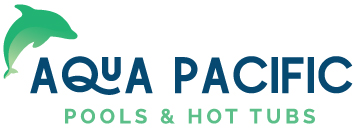Water Treatment
The goal: Crystal clear water that is safe for the people using it and the equipment that runs it.
How to reach it: Read and apply the following. Don’t worry, there’s no test at the end. It’s just free advice on how to create the best water environment for you and your pool or hot tub.
Part 1: Understand the 5 Keys to Basic Water Care
Circulation
Pool and hot tub water must be circulated for maximum sanitizer effectiveness. The more your water is in motion, the harder it is for bacteria and algae to take hold. Circulation also makes it possible for debris to be captured by the filter, resulting in clearer, cleaner water.
Filtration
The filter is one of your most important pieces of equipment in your pool and hot tub. It removes both visible debris and most microscopic matter. A filter should be rinsed off regularly (backwashing for a pool filter) to remove debris that inhibits its straining ability. In addition, since rinsing does not remove oils and deeply embedded debris, every filter needs to be chemically cleaned regularly.
Cleaning
Some swimming pools and hot tubs have areas with little or no circulation. This is where algae and bacteria can begin to grow. At least once a week, a pools walls and floor should be brushed and vacuumed to remove debris that the filter misses. For hot tubs, cleaning and brushing the surface every time you drain is recommended. Also, when the hot tub is not in use it is recommended to open up all jet lines so that water can move through them and keep them clean.
Testing
Every pool and hot tub has characteristics that must be regularly measured and adjusted. Most important are the pH and the level of active sanitizer. By testing these two factors at regular intervals, you’ll understand how bather load, weather and product application affect the water. Test your pool water two or three times per week. Every 4-6 weeks it is also recommended to drop off a water sample with us for complete analysis. This will help you maintain proper water balance and greatly reduce the potential for problems.
Chemistry
The last step in a total pool maintenance program is applying the right products to your water at the right time. This will help you; provide a sanitary swimming environment for your family and friends, balance the water to protect the equipment and pool surfaces, and provide brilliant, sparkling water that’s inviting. We can provide you maintenance sheet customized to the size of your pool or hot tub, and to the products you use.









